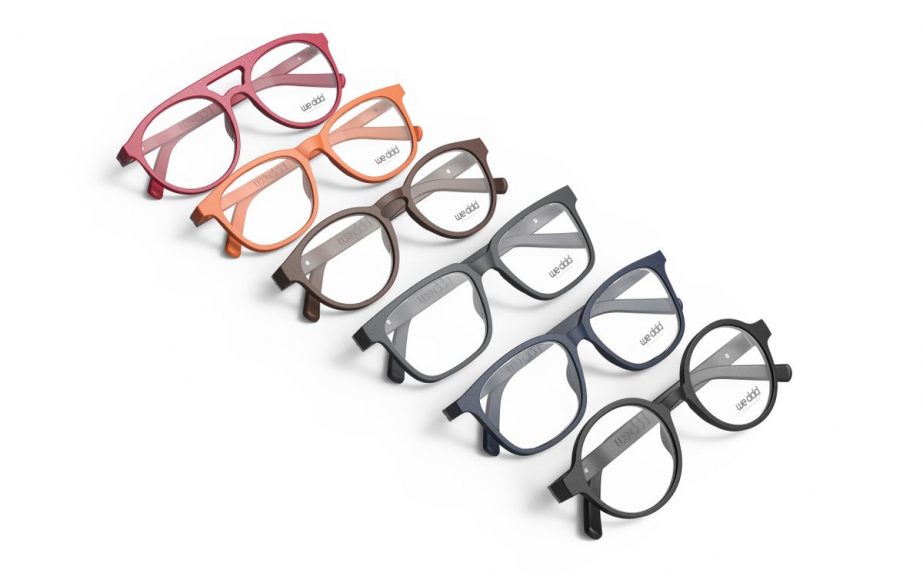
Too big. Too square. Not round enough. Too ‘Harry Potter’. Makes my nose look funny. Keeps sliding down my nose. Not in that colour. Not that brand. Those will do.
Choosing a pair of glasses is a trial for most people, a process that varies little the world over: people cursing their faulty optical performance while stood before racks of different frames, trying to find something that suits their face, taste and budget.
Putting aside fashion, most of us are unaware that the shape of the frames is as important to your vision as the bits of glass that sit in them.
“When the frame is chosen the optician sits down and selects the lens, and the lens manufacturer has to do the magic,” says Felix España, global new media manager at Hoya, one of the world’s largest optical lens manufacturers.
“Sometimes the fit of the lens is not ideal,” he explains, listing a number of parameters that the lenses have to match to attain perfect vision quality: inclination in front of the eye; distance between eyes and lens; primary position of the eye (never horizontal with the ground). Even the wearer’s height plays a part.
Present frame manufacturing methods, which leave the lens designers trying to get the best performance out of the shape of its glass, makes this a challenge at best.
“You’re going to an optician to get your vision fixed, but you end up having to compromise between your fashion, your style and a kind of visual quality that is acceptable,” comments España.
Digital Solution
The solution is digital; a combination of measurement, design and manufacture that gives customers the ability to walk away with a product that is not only perfect for vision and fit, but exactly the style they want.
Yuniku is the partner project between Hoya and 3D printing experts Materialise, who have together built a business model a giant leap beyond the current lens and frame setup.
The Yuniku sales cabinet appears like any other, yet uses 3D scanners to gather data about the shape of the customer’s nose, the position of their ears, and any other features of the facial anatomy and proportions that could affect the comfort and fit of frames.
Software determines the ideal position of the lenses in relation to each eye, while the customer chooses a style of frame from a range of designs.

The design data works to the parameters set by the lenses, and once perfectly fitted Materialise then uses it to manufacture the frames using SLS 3D printing, while exporting the CAD file of the lens shape for Hoya to produce.
All the data used is accurate to the finest detail, making manufacture, assembly and fit perfect each time.
“We decided to think the other way around,” says España. “Let’s put the lenses in the ideal position, where we know they will perform the best ever, and then the frame can change some parameters to accommodate this.
“When we explained that to the opticians they said: ‘Wow! You’ve nailed it!’. Of course, for the consumer it is also excellent.”
Given the list of proper fitting directives for frames (most of which are an unknown to the customer) Yuniku acts as a guide.
If the frames are improperly fitted then your cheeks might interfere when you smile, prompting the frame to bounce up and down. Equally, if the frame sits too far above your eyebrows, or if your eyelashes are too close to the lens.
Most effective is Yuniku’s ability to compensate for asymmetrical faces, which 99 per cent of humans have, something the designers of frames constrained by mass manufacturing processes are unable to do anything about.
The system has boundaries respecting the best visual performance, the frame designer’s vision of the shape and styling, as well as the customers unique fitting needs.

Added value
Finding the real added value in 3D printing, something many have struggled to set aside from the novelty of the process itself, is where the true potential still lies, and from its headquarters in Leuven, Belgium, Materialise has endeavoured to focus on the bigger picture.
“How are we going to make the right choice for a tech that’s going to have a transformative impact?” asks Alireza Parandian, corporate business development at Materialise.
The answer, he says, is through working with companies to make the right decisions, not simply for the design or manufacturing stage, but at a boardroom level.
Parandian explains that while 3D printing’s hype continued to rise and fall, out of the limelight, Materialise’s teams of designers, engineers and material scientists continued to look at full end-to-end digital supply chains with various industry partners.
With expertise in the medical sector, producing and verifying materials for daily on-skin contact is already in the company arsenal. Equally, not being tied to any one single additive process means that Yuniku can develop and flourish along with more exciting materials and processes in the future.
The project continues apace, with more designers and opticians around Europe signing up, while more materials and lens shapes are added to the roster.
By changing the optical eyewear process from a framecentric to a vision-centric process, the digital technologies used have transformed an entire industry ecosystem, all with an eye on the future.







